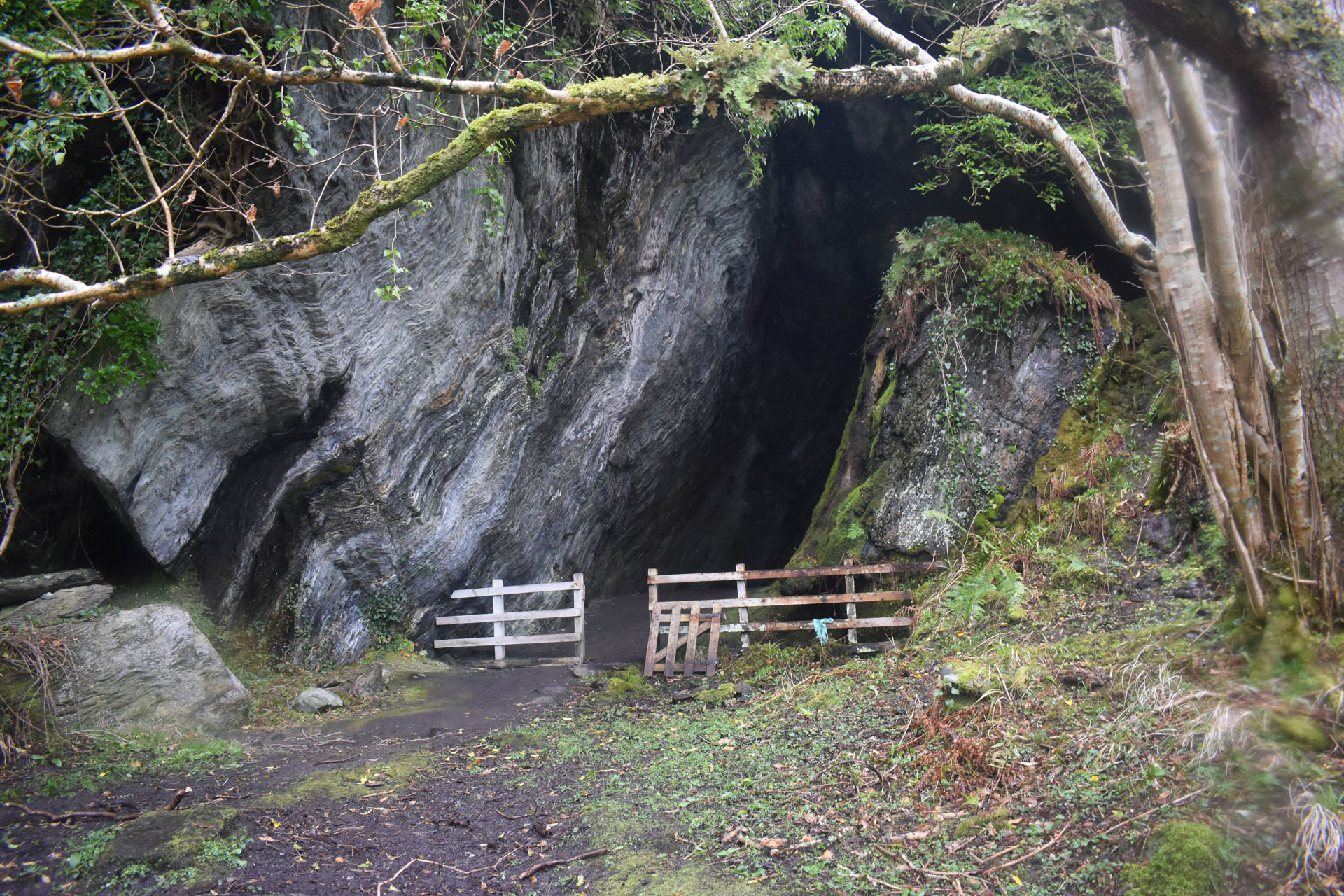St. Columba’s Cave forms a natural cave on the coast of Bàgh Dalach Duibhe in Loch Caolisport, Knapdale. The cave has seen extensive human occupation throughout history and prehistory, beginning in the Mesolithic period and continuing through the Bronze Age, Iron Age, Early Medieval and Early Christian periods. Local tradition suggests that the cave was visited by St. Columba on his way to Iona and Dunadd.
In 2023, a short programme of archaeological works, which included photographic survey and analysis of human bone fragments, was undertaken within the cave. The works were funded by Historic Environment Scotland.
The Cave
St. Columba’s Cave comprises a natural fissure approximately 15m wide and 23m deep. Inside the cave, a drystone altar has been built along the east side, above which the remnants of three early Christian crosses can be seen carved into the cave wall. The altar may have been sheltered by a lean-to timber structure, evidenced by traces of timber sockets within the cave walls.
Fragments of drystone walling are also present both within the cave and just outside the cave mouth. On the floor near the entrance is a rock-cut basin; a second similar basin can be seen next to a small waterfall a short distance west of the cave.
The remains of a 13th-century chapel stand a short distance south of the cave entrance. The chapel contains a paved eastern end with large stones that may have housed an altar base. Several burials found in the area were likely associated with this medieval religious site.
Excavations Over the Years
In the late 19th century, the cave was cleared by the local proprietor, and a stone coffin was reportedly found inside the main cave. The material from this clearance was deposited nearby and, along with the cave, was subject to excavations by the Mid-Argyll Archaeology Society between 1959 and 1976. Examination of the 19th-century material revealed hundreds of pieces of worked bone and antler, fragments of pottery, metalworking residues, crucibles, moulds, and large quantities of human and animal bone. A Viking-style bronze balance with folding arms was also uncovered.
Within the cave, trenches revealed at least three and a half feet (1m) of archaeological deposits, containing midden material, hearths, metalworking material and finds of bone tools and flints. Near the cave entrance, two inhumation burials, oriented on the altar, were also discovered and thought to be associated with the nearby chapel.
(Background: 1st edition Ordnance Survey map, surveyed 1869. Reproduced with the permission of the National Library of Scotland CC-BY – View Full Map)
Recording the Cave
In 2023, an archaeological survey was carried out to record the current condition of the cave and recover some exposed fragments of human remains. A detailed photographic record was made of the cave, including the creation of a 3D model using LiDAR, which you can explore below.














